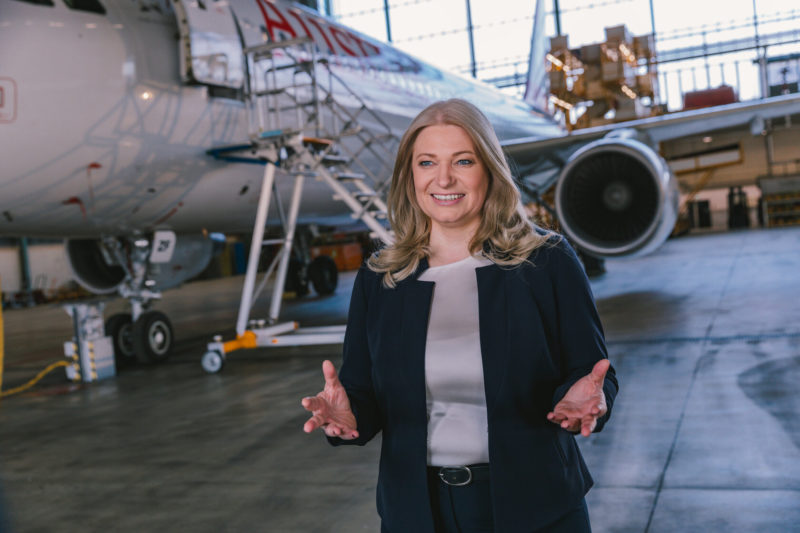Lufthansa subsidiary Austrian Airlines, which operates one of the oldest long-haul fleets in Europe, the carrier will need a fleet makeover this decade.
“A lot will happen in the Austrian Airlines fleet in this decade,” CEO and CFO Annette Mann told Sam Chui CEO Talks at the carrier’s head office in Vienna.
Mann, who took over the Austrian Airlines leadership positions on March 1, said, “I can’t give you a schedule,” but noted “it is also relatively normal for us in our group to fly aircraft that are up to 30 years old. But new aircraft for long-haul routes, we have to be able to afford them.”
Let me explain why the long-haul fleet topic is sensitive in Austria. Austrian Airlines operates three Boeing 767-300ERs and six 777-200s. The oldest 767 was built in 1998, the oldest 777 in 1997, and the youngest 777 in 2007. The relatively small long-haul fleet faces increased maintenance complexity as it has two aircraft types. All these aircraft, except two 777s, have been ordered by former Formular 1 champion Niki Lauda for his airline Lauda Air.

Austrian Airlines is the weakest performer inside the Lufthansa Group in terms of financials. However, besides good maintenance, the Boeing 767s are nearing the end of their lifetime.
“Something else will happen in this decade. And if we aim for this rollover with a uniform fleet type, that will also help us with efficiency,” Mann told me, that she is aware of the situation.
The aircraft market itself is challenging, she said. The fact that Lufthansa is reactivating the Airbus A380 shows the scarcity of aircraft and the poor reliability of delivery dates.
“The aircraft market is volatile and complex. We are in constant contact with the Lufthansa fleet management to see how a fleet exchange could look like for us,”
CEO and CFO Austrian Airlines, Annette Mann
Wet-Leasing Airplanes?
Currently, Finnair is wet-leasing three A350-900s to Lufthansa subsidiary Eurowings Discover. Asked if such an interim solution is also a possibility for Austrian, Mann replied, “At the moment I hope we don’t need a temporary solution. Even an interim solution costs a lot of money, you may have to retrain staff, etcetera. Our priority is to find a long-term solution. If the aircraft market gets more complicated over the next few years, then maybe.”
Austrian will remain as a network airline within the Lufthansa Group and based in Vienna. However, nine aircraft is considered the absolute minimum number for a long-haul fleet.
Regarding aircraft type, Mann said she is open to everything. “In the end, it has to be right for Austrian Airlines,” she said. “It depends on so many factors: configuration and size; that there are no different aircraft types that add complexity; and that we can handle it financially.”
“One can say the fleet is unfortunately not the youngest, but we do not see any disproportionate increase in maintenance costs,” she continued. In addition, Austrian will not buy any new aircraft itself. They will be leased from Lufthansa.
“I am very pleased that we are now getting four A320neos,” Mann said. “The first aircraft should arrive in November. We fly a disproportionately large number of tourist flights.”
Austrian is operating at 87% capacity for its peak summer season and has reactivated two A320s from its so-called deep storage.




